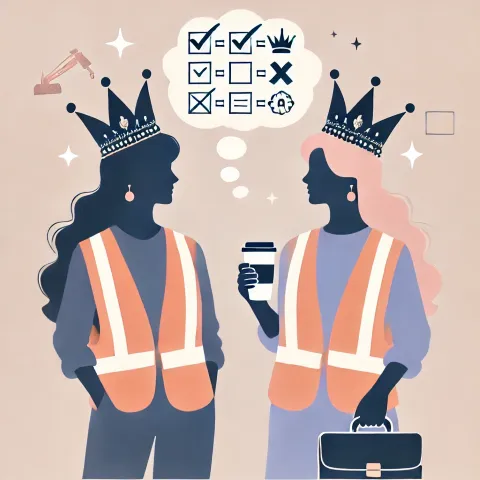
Which Disney Princess Are You (in the Workplace)?
Published on March 17, 2025 • Technology
Millennials remember the era of Buzzfeed quizzes with fondness, and some may even describe it as identity or culture shaping. People have always loved these miniature personality tests, and while Buzzfeed may no longer be in its heyday, the popularity of these dinner-table icebreakers has transcended generational gaps. To the analytically-brained among us this sounds like a datapoint that could be used in the workplace. Or is it?
You’ve probably heard someone’s answer to one of these and thought, “Oh wow, that sounds mildly psychopathic, I’m sure glad I don’t work with them!” Interviewers will sometimes ask questions like “if you were an animal, what kind of animal would you be?” as a conversation starter, but unscored. Part of the reason for this is that laws around discrimination in hiring make filtering via psychological or personality tests a grey area. Any suggestion of discrimination opens employers to potential lawsuits and investigations. Even if the applicant answered unironically with “I would be a dragon because I love hoarding gold and burning down unsuspecting villages!”, you would need to prove that the question was asked in a controlled environment by a certified professional and that the question was directly relevant to the position being applied for.
Now that I’ve most likely talked you out of implementing these in your interview processes, here are a handful of tests that, in an HR and legal department approved manner, could be run during an interview. Failing that, they make for great casual icebreakers! Their sources range from actual psychological tests to dubious corners of the internet, and they’ve all been simplified down to their simplest forms, so I’ll again warn that you’ll want to do diligence before suggesting their use in your workplace.
The Marshmallow Test: The test subjects (usually children) are offered a marshmallow and told that if they leave it for a few minutes, they can have two. Adults who’ve developed impulse control will usually say the correct answer is obvious, yet we fail slightly more complex versions all the time. Remember that greasy fast-food you bought with money you could have saved for a nice dinner out?
Cognitive Reflection Test (CRT): “Some apples and some bananas cost $1.10. The apples cost $1 more than the bananas. How much did the apples cost?” If you suspect a trick, you’ll probably think about the question a bit further, but the intuitive part of our brains want us to think the apples were $1 and the bananas $0.10.
The Breakfast Question: “How would you feel if you hadn’t eaten breakfast?” This one has some deep internet lore behind it, but the idea is that you’re testing the subject’s capacity for hypothetical reasoning. Can they process “what-ifs”? It can also extend into testing for empathy (“How would you feel if you were in Steve’s shoes and someone stole your ice cream?”).
Thematic Apperception Test (TAT): Show the subject an ambiguous picture (ideally emotionally neutral) with people in it and ask them to imagine what is happening, including what the people are thinking and feeling. Most people will subconsciously project their own thoughts and feelings onto the characters in the picture.
Moral Circle Test: This one has a history of being misunderstood and used as a political cudgel, so you may want to save it for your more understanding friends. Subjects were asked to rank the moral responsibilities they felt toward increasingly distant groups, starting from themselves in the center of a circle and working their way out through family, friends, acquaintances, animals, Earth, etc. The primary misunderstanding is whether the outer circles include the inner circles, i.e. whether caring for Earth includes caring for family. It’s unclear whether the subjects fully understood this, and those interpreting the results seem confused as well.
Workplace Motivation Test: “You are up for a promotion. You can be promoted into a position that pays 20% more, or one that pays the same that you’re currently making but aligns with your non-financial life goals or sense of purpose.” This one is my own, and you can learn more about the underlying concepts here: “True Believers & Mercenaries” Are you a “True Believer” or a “Mercenary”?
Need help with your interview processes or figuring out which Disney princess you are? You can find us at scalebright.ca.
